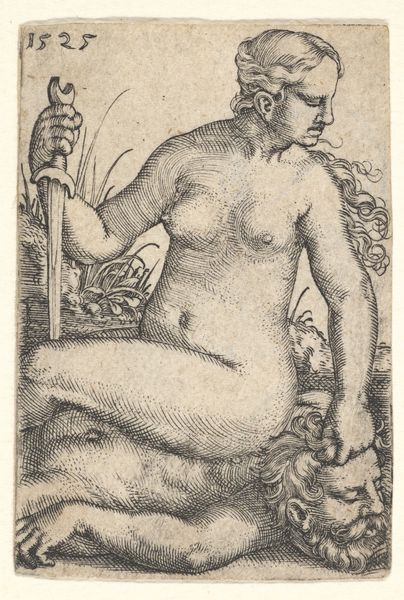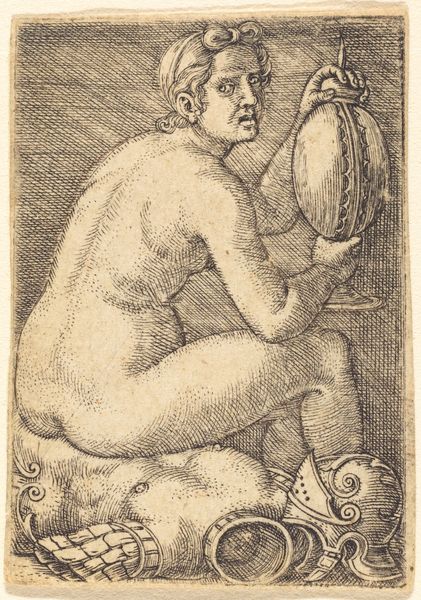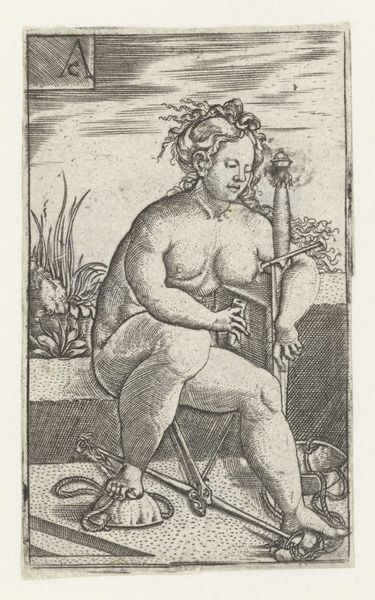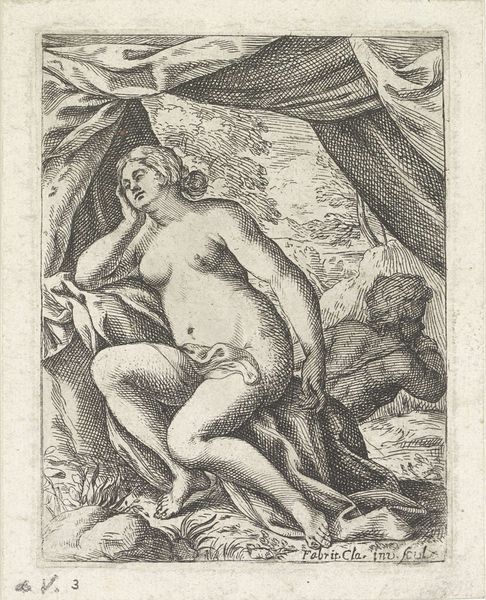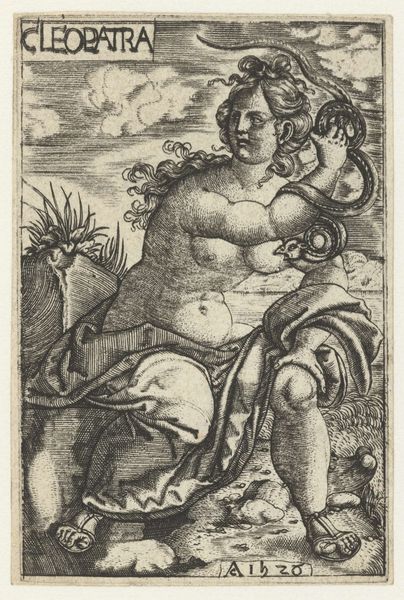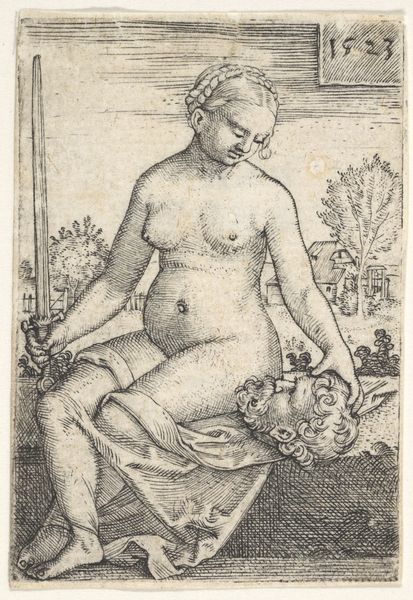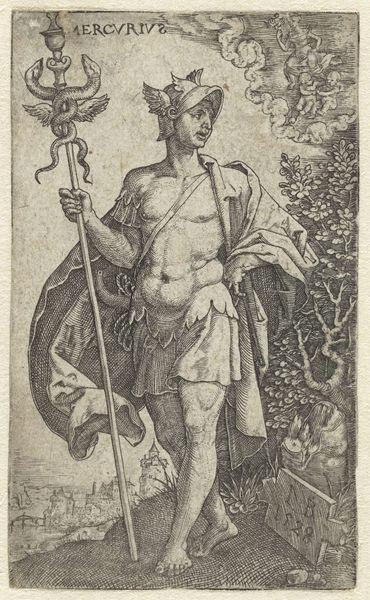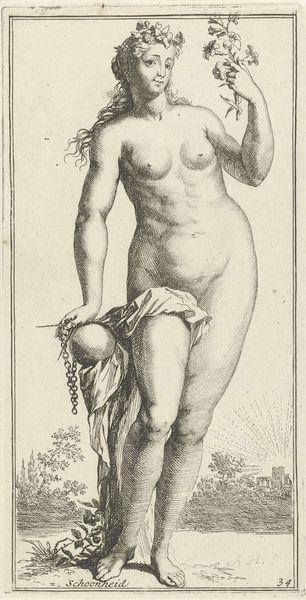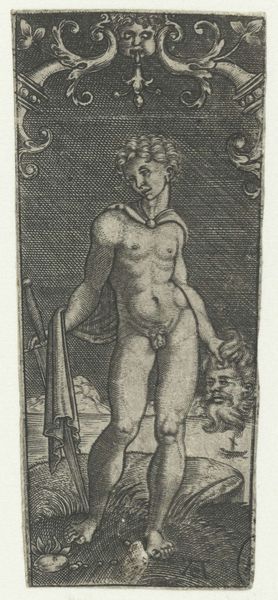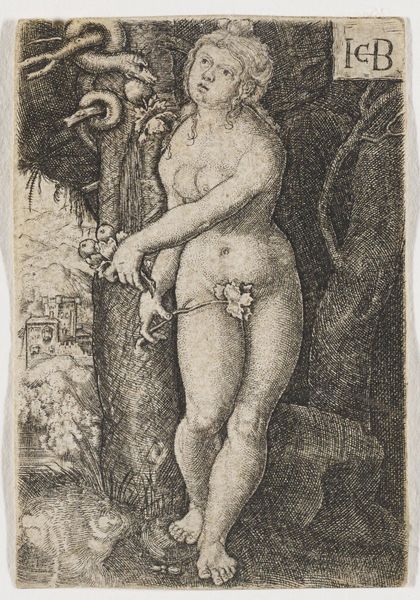
drawing, print, engraving
#
drawing
# print
#
figuration
#
history-painting
#
italian-renaissance
#
nude
#
engraving
Dimensions: 54 × 36 mm (image/plate/sheet)
Copyright: Public Domain
Barthel Beham’s 1525 engraving depicts Judith, sword in hand, sitting triumphantly over the severed head of Holofernes. This image is a potent assertion of female power, rooted in the biblical story of Judith, who saved her people by bravely assassinating the Assyrian general. Note how the motif of the severed head transcends time, evoking similar images from antiquity, such as the head of Medusa. What does it mean? Across cultures, this symbol embodies themes of victory, sacrifice, and the subjugation of chaos. In Judith's narrative, the act becomes a symbol of liberation and resistance. The way Judith grips Holofernes' hair connects to earlier depictions of Salome holding the head of John the Baptist, an act that demonstrates the cyclical nature of the symbol, and how it has resurfaced, evolved, and taken on new meanings in different historical contexts. The lasting impact of the symbol engages viewers on a deep, subconscious level, stirring emotions of horror, triumph, and contemplation.
Comments
No comments
Be the first to comment and join the conversation on the ultimate creative platform.
